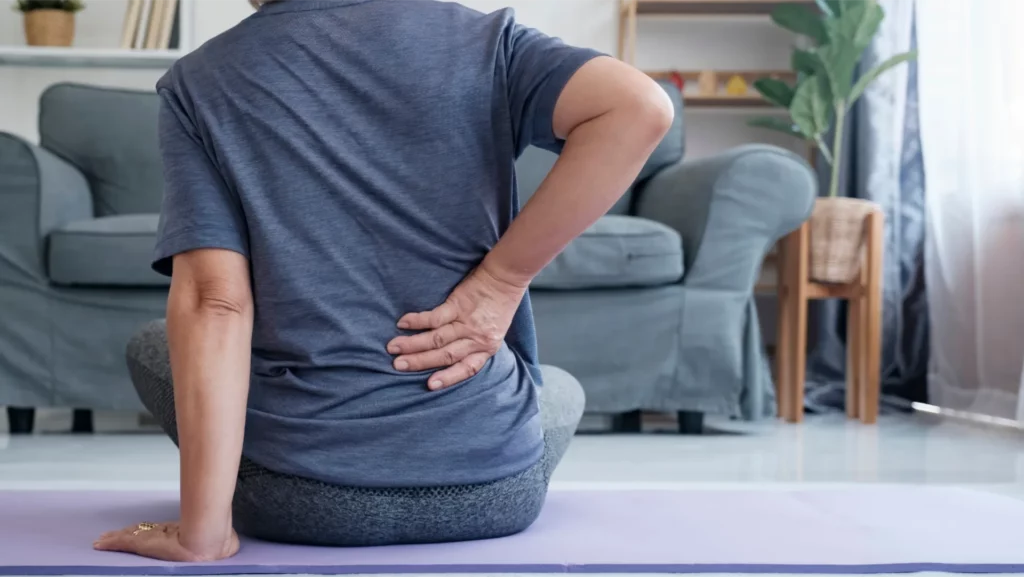The World Health Organisation (WHO) has recently released its first ever guidelines for non-surgical management of chronic low back pain. In this blog, we take a more detailed look at chronic low back pain, the effect it has on those who suffer with it, and what WHO recommends you do about it.
Low back pain stats
According to WHO, low back pain is the leading cause of disability worldwide. In 2020, approximately to 619 million – or 1 in 13 – people, experienced low back pain. This is a 60% increase from low back pain stats in 1990. What’s more, cases are expected to rise to an estimated 843 million by 2050.
Low back pain explained
Low back pain is pain felt between the lower edge of the ribs and the buttock. It can be specific or non-specific. Specific low back pain is caused by a certain disease or structural problem in the spine, or when the pain comes from another part of the body. It is non-specific when it is not possible to identify a specific disease or structural reason to explain the pain. And it’s worth noting that low back pain is non-specific in about 90% of cases.
When does it become chronic?
Low back pain (or indeed any other type of pain) can be acute, sub-acute or chronic – see below for details.
- Acute pain can usually be easily explained, is reduced by medication and reduces over the course of the healing process, which usually takes a few weeks or months.
- Sub-acute pain has the same markers as acute pain, but typically lasts a little longer.
- Chronic pain is defined as persistent pain that continues for longer than 3 months, either as part of another health condition, or despite investigations and treatment.
As such, chronic low back pain can be defined as pain felt between the lower edge of the ribs and the buttock that lasts for three months or more. What’s more, chronic low back pain accounts for the vast majority of lower back pain cases seen in primary care.
Impact of chronic low back pain
Chronic pain has an enormous impact on those who suffer with it, affecting their ability to participate in family, social, and work activities. This in turn can take a toll on mental health which comes at a substantial cost to not only those who suffer with chronic pain, but also their families, communities, and the health systems they are a part of.
WHO report on chronic low back pain
In response to the growing numbers of people suffering with chronic low back pain, WHO commissioned a report to provide evidence-informed recommendations on non-surgical interventions, to help improve health and wellbeing outcomes for those affected.
As well as making specific non-surgical recommendations (see below), WHO also advised that care for those suffering from chronic primary low back pain should be holistic, person-centred, integrated and coordinated. They also instructed that it should be individually tailored to address the mix of factors (physical, psychological, and social) that may influence a patient’s chronic primary low back pain experience. This is because a patient’s emotions, worries, environment and body functions can all contribute to their experience of chronic low back pain.
WHO recommendations for managing chronic low back pain
There were a number of interventions recommended by WHO for those suffering with chronic low back pain including:
- education programs that support knowledge and self-care strategies
- exercise programs
- spinal manipulation therapy (as used by chiropractors and osteopaths) for use in all patients, as well as other physical therapies including dry needling (acupuncture) and massage
- psychological therapies, such as cognitive behavioural therapy and
- medicines, such as non-steroidal anti-inflammatory medicines
What not to do
WHO also provided advice on what not to do if you have chronic low back pain:
- TENS, therapeutic ultrasound, traction and lumbar braces/supports were all found not to be of value, with recommendations against their use
- The report also advised against most forms of commonly used pharmacological interventions, with only non-steroidal, anti-inflammatory medication receiving a conditional recommendation as mentioned above
- Opioids, benzodiazepines, antidepressants, anticonvulsants, muscle relaxants, cannabis-related preparations and paracetamol (acetaminophen) all received the thumbs-down, with explicit guideline advice not to use or recommend
What we think
We’re delighted to see recommendations from WHO that are so closely aligned with the way we care for patients with all types of pain at our clinic. The report acts as a strong endorsement for the evidence-informed, people-centred, interprofessional and collaborative approach we take to health care. We firmly believe in treating all patients as individuals, considering each person’s unique situation and all the factors that may influence their personal experience of pain, in order to work together to address the issue at hand.
So, in light of these recent recommendations, we will continue to focus on offering personalised health care to all our patients, as well as encouraging anyone who is experiencing chronic low back pain to make sure they seek out personalised care that accounts for all aspects of their life, be it personal, physical, social or to do with their environment.
